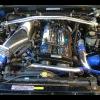Placement Of Afm
Announcements
-
Similar Content
-
Latest Posts
-
So we have most the interior back in, and for the first time with one OEM speaker hooked up. The 31 is running, driving and now tunes!!! Hahaha yet another step for the sub that sat 10m under for two weeks!!! unbelievable really 👌 lots of love work and not giving up on her. Seen so many youngsters part way less, and in way better condition. I’m stubborn, thinking another problem is just a hurdle to overcome, One at a time. IMG_9277.mov
-
By TurboTapin · Posted
That is correct. I'm using a modified ABS ring and a ZF speed sensor on my rear diff for speed input. I'm running a Haltech ecu. -
By TurboTapin · Posted
Been busy with the newborn. We originally thought we were going to go for a third, but we're good with two lol. He's starting to actually sleep now so I've had some energy to work on the car. It's been parked away in the garage since late November due to winter. I went ahead and redid all my head oil drains. I originally had my front and rear head drain going into the same pipe but have since split them up. I also added an Ethanol content sensor to get ready to run E85 this summer. Tossed it on my return line. Sensor sits nicely under my intake manifold. I also have a lot of parts that came in for my rear end. I'll be swapping over to a 3.3 final drive and doing the GK teck anti squat mod. While the rear subframe is off, I'll also change every bushing. We're planning on buying another house soon with the condition that I get at a minimum a 2 door garage, so I'll wait to have more room for this. Now onto the strange things that recently happened... After changing the lower rad hose (It had been sitting in my cabinet for well over a year and was the last hose I had to replace), I let the car idle in the garage to bleed my coolant. After running for a few minutes, it started missing. Got much worst within a minute or two and then stalled and would not restart. My crank sensor decided to crap itself. No damage, no explanation, just died. I went ahead and replaced it with another ZF sensor but the heavier duty stainless model with a shield. Tossed that in and started right up. Has anyone else seen this? I hate when things fail without cause. Luckily this was a blessing in disguise... This lead me to recheck my timing. It seems I may have had a beer or two the last time I had set my TDC angle as I was off exactly 5 degrees... I miscounted a line haha. I was running 5 degrees less then commanded. It's a little embarrassing but helps explain why my dyno operator seemed to think I should be making more then 478rwkws. -
Sharing results from recent Liberty Walk R35 GTR, since they are still considered as somesort of a V36 Skyline. We do them turbos too. This are high flowed SS-1 models with ball bearing conversion done. Car have managed to pull 485awkws @ 20Psi so far pushing limitations of factory built engine. The build list for R35 GTR enthusiasts as follow : HyperGear high flowed stock turbos in SS1 (G25-660 specs) Custom titanium intake pipes. Vspec performance titanium front pipes. Vspec performance 4" titanium exhaust. Upgrade fuel pumps. 1200cc injectors. Ignition coilpacks Hks intake plenum. Hks intercooler piping. Greddy intercooler. Greddy bovs. Top-secret coolant reservoir. Emtron ecu. Straight E85. Built gear box.
-
Nah no bearings, just slip fit. Would be a reasonably challenging but not impossible job to modify it to run bearings but I'm hoping that's not necessary as I may have well built one myself if I end up spending hours modifying it!
-








Recommended Posts
Create an account or sign in to comment
You need to be a member in order to leave a comment
Create an account
Sign up for a new account in our community. It's easy!
Register a new accountSign in
Already have an account? Sign in here.
Sign In Now